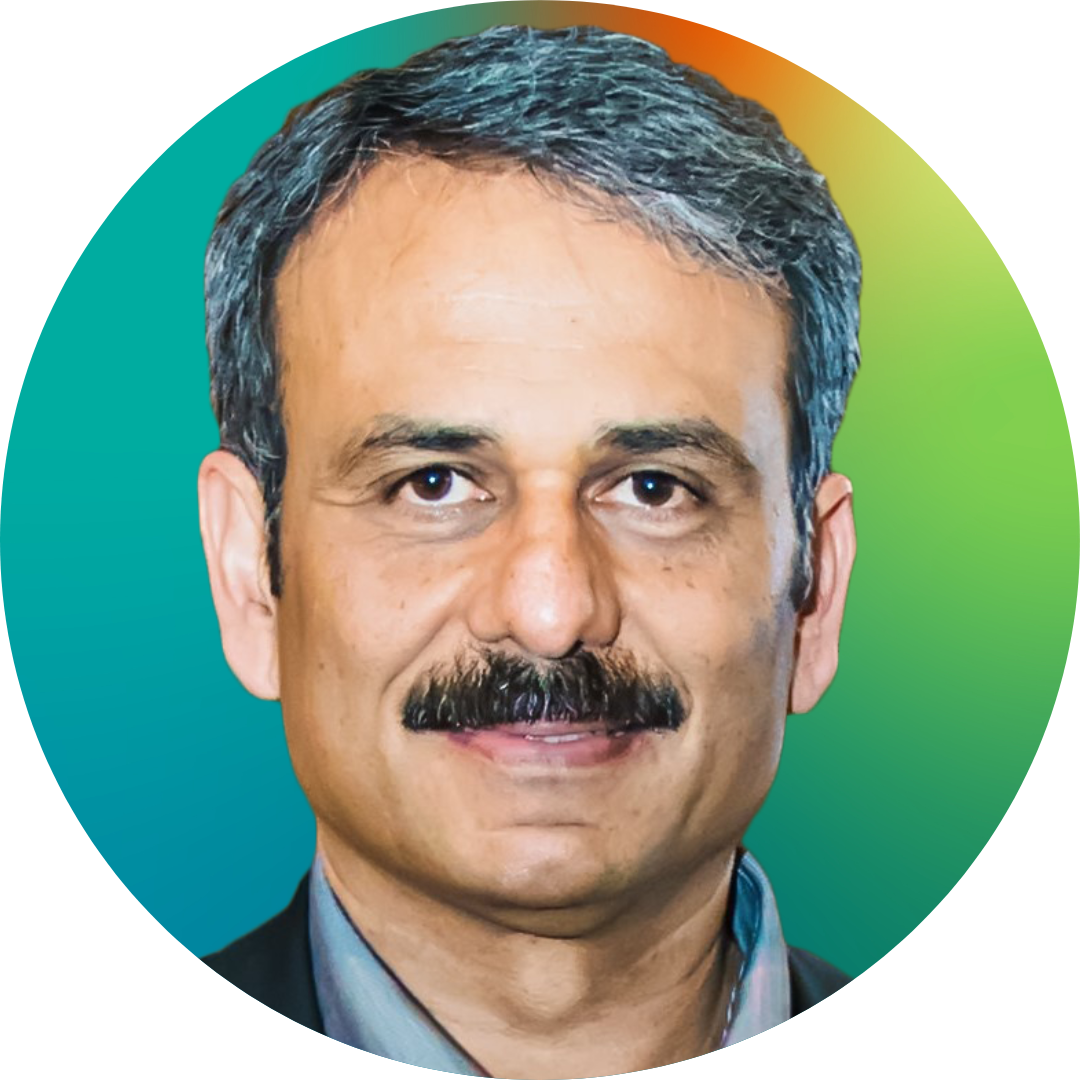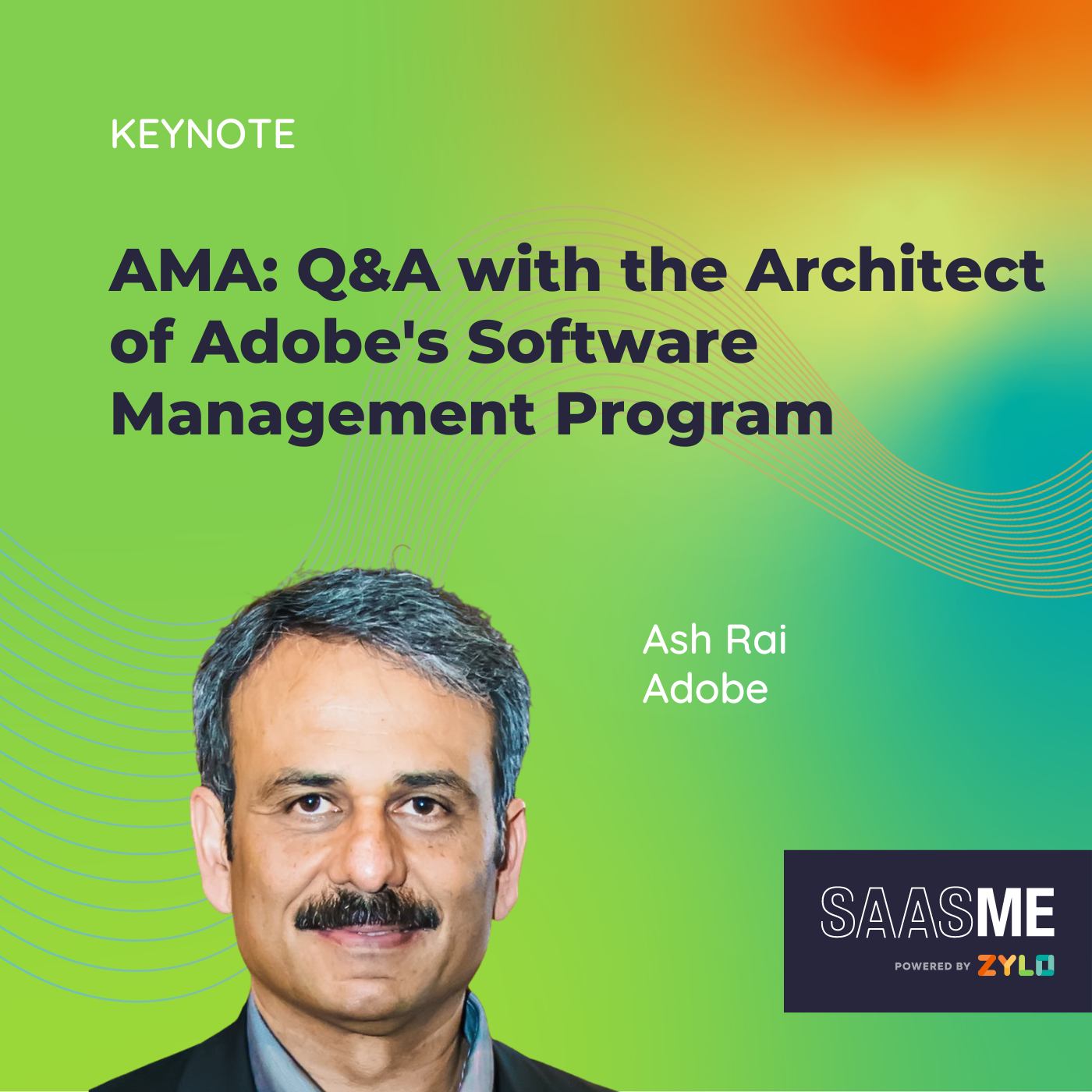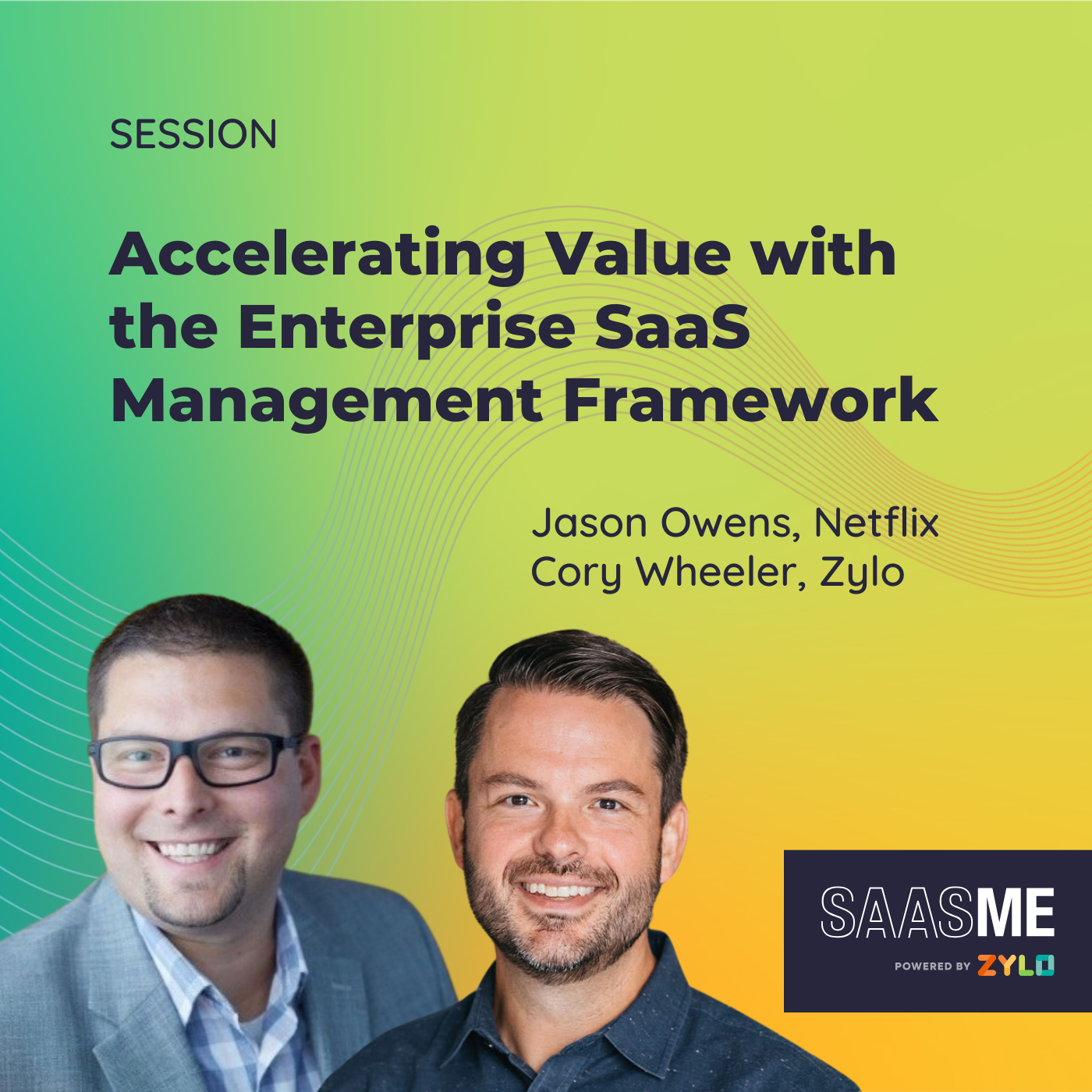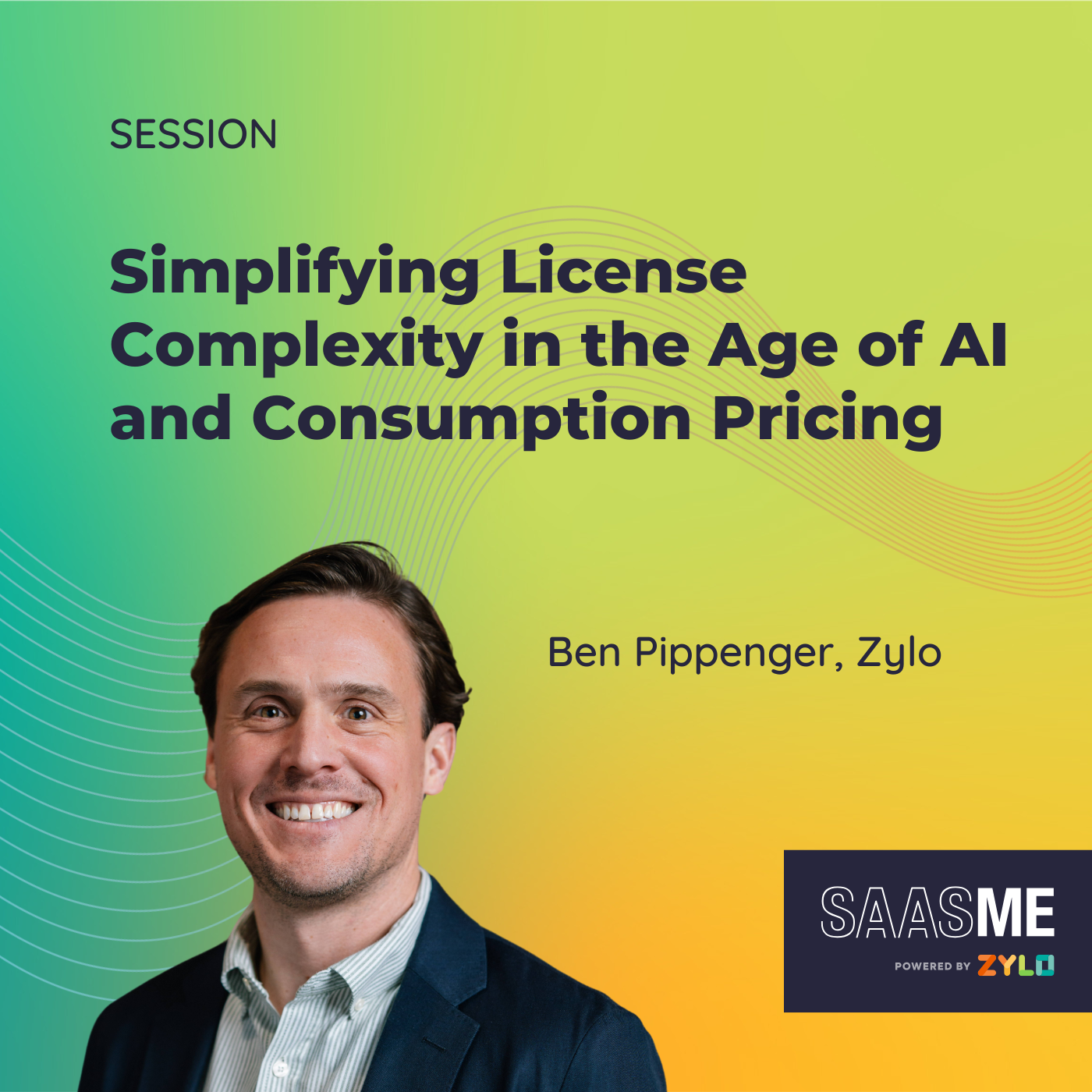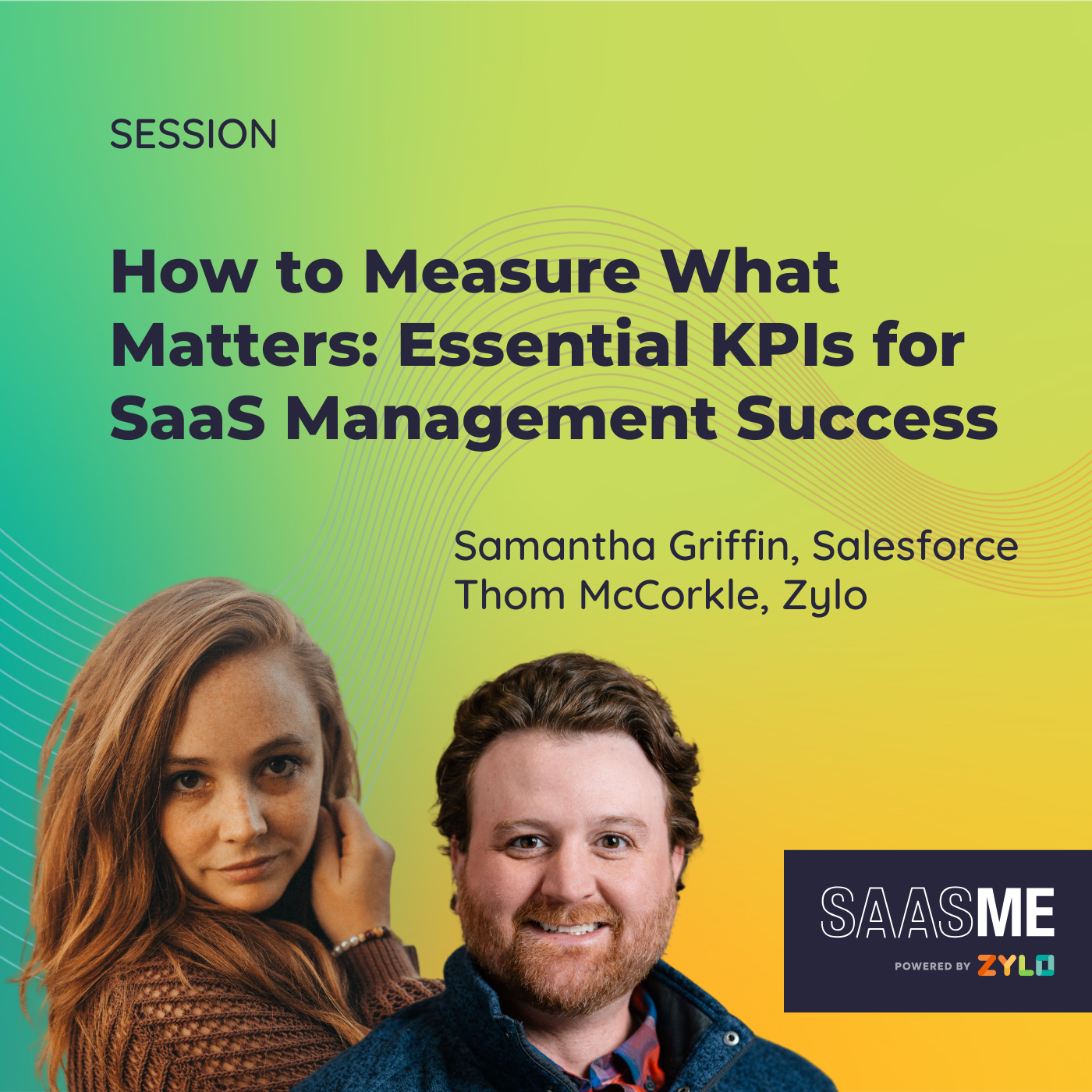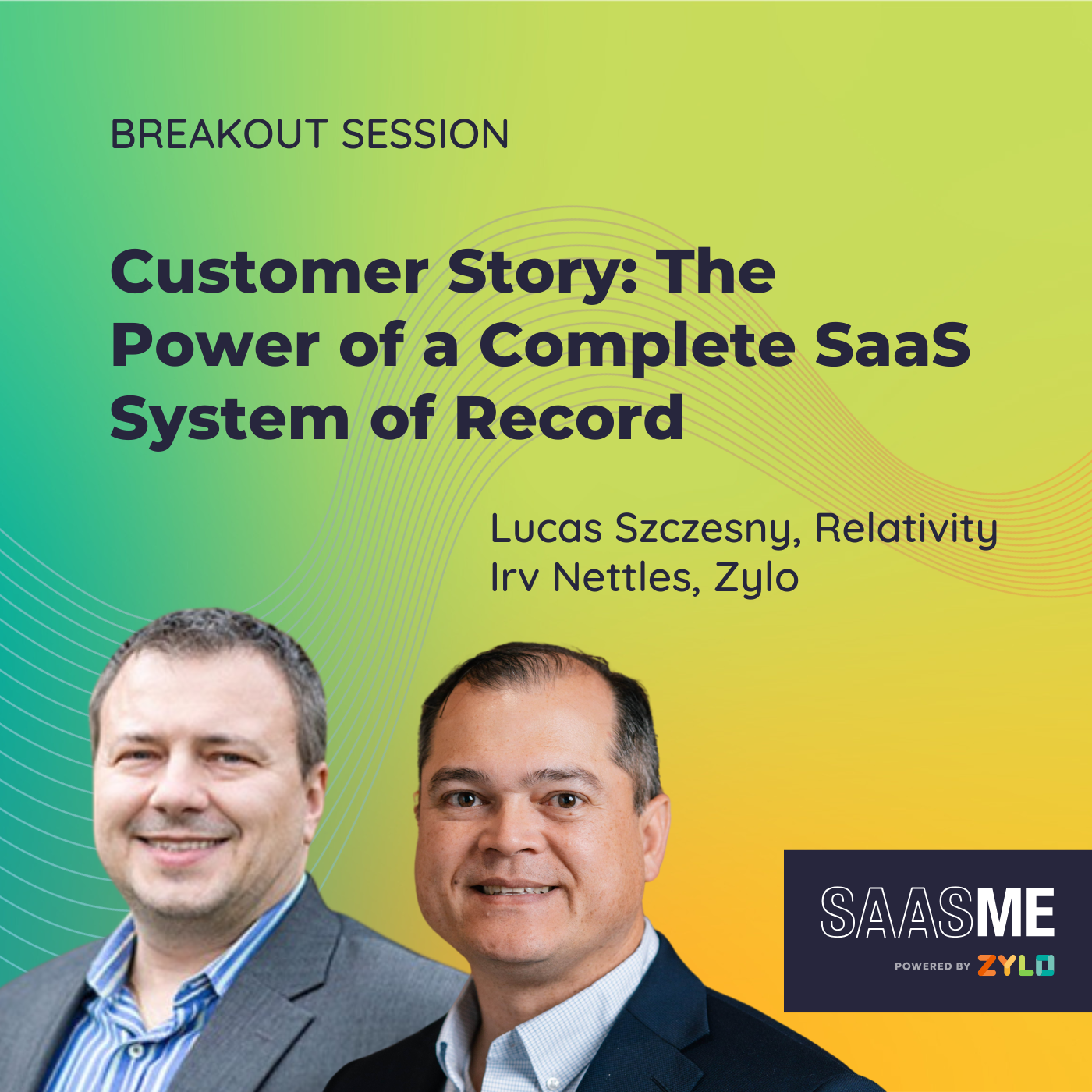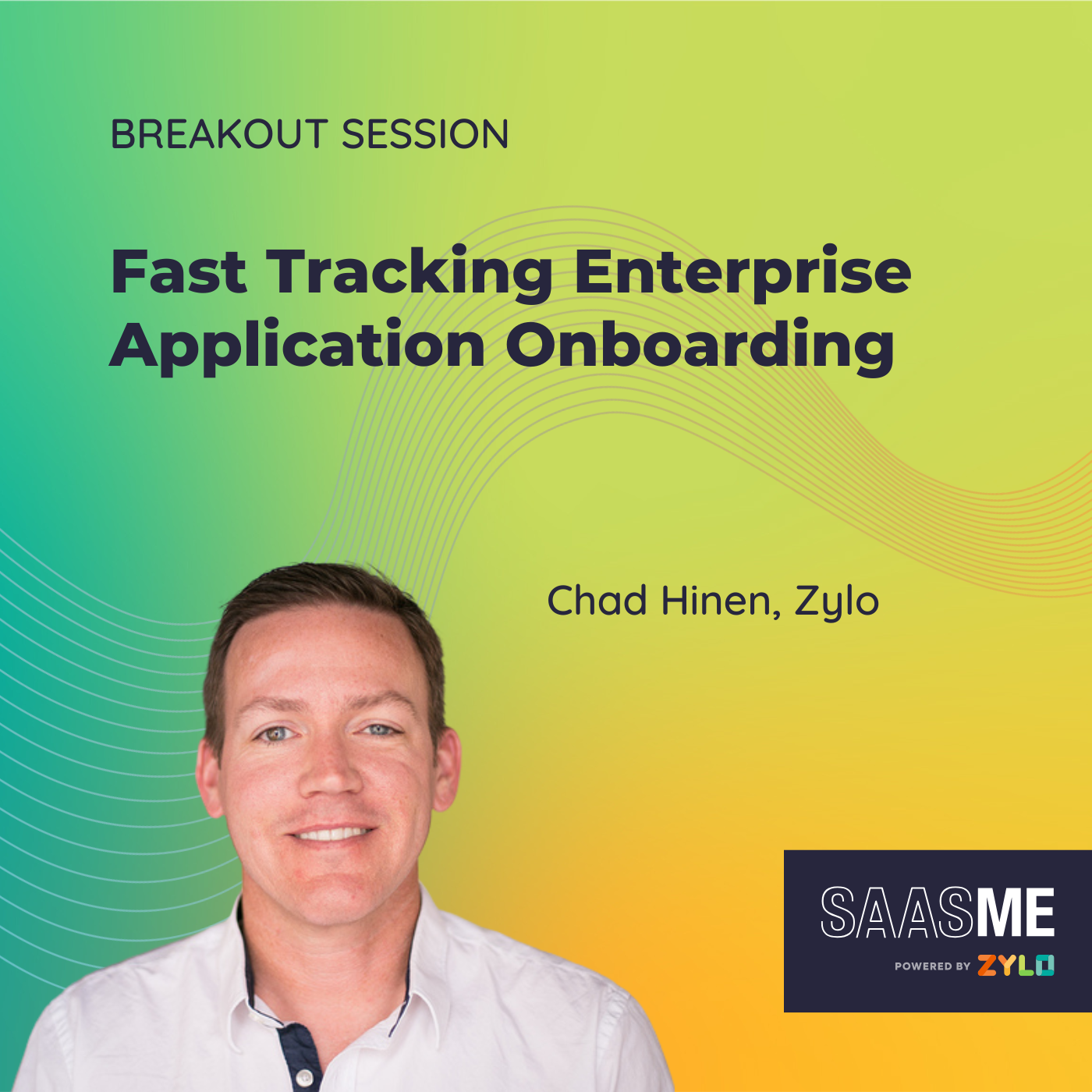Ask Me Anything: Q&A with the Architect of Adobe’s Software Management Program
- 0.5
- 1
- 1.25
- 1.5
- 1.75
- 2
Vinod Vishwan: Pre- Zylo, we were facing massive, unprecedented growth. When I joined Adobe five and a half years ago, we were a $4.8 billion company entering 2017. Today we are an$ 18 billion company. It is two different worlds.
Cynthia Stoddard: Before using Zylo, we were managing our SaaS products manually, and only for high dollar spend applications. These were point solutions and were not scalable, which was not sustainable for us. Given the rapid growth Adobe was experiencing.
Vinod Vishwan: It's simple. We recognize that software spend across Adobe was growing faster than our revenue.
Ash Rai: So Zylo has helped us with the ability to establish a methodical and reliable framework for SaaS governance. The Zylo platform provide us with complete view of our software spend and associated products.
Vinod Vishwan: Visibility into our portfolio was table stakes for the success of our program. We could not begin to manage our software if we could not understand the full scope of it.
Ash Rai: Our team has successfully achieved rationalization, standardization of software categories. We were able to identify redundant applications in use. For example, after we deployed Zylo, we became aware that we were using 15 plus survey tools. We successfully eliminated majority of them and now we use only a couple of tools. If we talk about metrics, then out of about 2, 600 plus apps, we have established 400 applications as standard.
Cynthia Stoddard: With the help of Zylo, we unlocked$ 60 million in savings and cost avoidance. Identified and inventoried all of our software used in Zylo AI. And categorized over 2, 600 titles into Adobe specific- categories.
Vinod Vishwan: The AI we use to identify current titles and categorize them according to functional areas, saved over 500 hours at the onset of the project. And became the backbone of how we divided our software portfolio. The automation, including RPA, that we use to streamline end- to- end processes such as license provisioning, inactive license reclamation, and chargeback of enterprise licenses cost, saves collectively over 10,000 hours annually.
Cynthia Stoddard: As the entire industry moves towards the cloud, managing SaaS will be essential for Adobe. A cloud- centric model, and hence SaaS management, achieves the following for Adobe. It allows us to manage software proliferation, which in turn streamlines usage and reduces costs. This is especially important amid economic uncertainty and fierce competition.
Ash Rai: Zylo allows us greater insights into our software usage. Our software spending is at our fingertips now. We are compliant with our obligations to our software vendors. We harvest software licenses, resulting in millions of dollars in cost of avoidance. It also allows us to build better strategies for contract renewals and negotiations.
Cynthia Stoddard: I've tried this before, and frankly it did not work. The other tools had too much noise. Zylo removes the noise.
Cory Wheeler: All right, well that was a fantastic video. We are super excited today to bring Ash Rai in to talk about the story at Adobe. You know, Ash is the architect of the SaaS management program internally at Adobe. It's been a four- year road that we've been working together. Adobe has been known for their cloud forward and progressive stance, but they really struggled to understand their SaaS investments and overall portfolio. The world- class program we're going to get into a little bit today and have Ash walk through that. We're going to save plenty of time at the end for questions, so please get those in. I saw some awesome questions in the previous sessions around proving out methodologies and ROI and how do you define that. So keep those coming in the chat right now. But Ash, we are so excited to have you here today. Ash is in the office of the CIO, the head of VMO and SAM at Adobe. Ash, thank you so much for joining us.
Ash Rai: Yeah, thank you. Cory. Thank you for giving me this opportunity to share what we have done at Adobe.
Cory Wheeler: Okay, let's get into it. I want to start back to the early days before your overall program was in place. You've really been able to mature your SAM program and you've got a mature program around on- prem software. So how did you recognize the problems that you had internally? How did you identify the need for a SaaS- specific solution? How did you come around to the concept of looking to architect what you have done today?
Ash Rai: Yeah, so SAM and specifically SaaS management is not a problem specific to Adobe. Every company across the globe has the same problem. At Adobe, things are a little different. But when I joined, we were seeing massive growth. We've grown from just under$ 5 billion to$ 18 billion now. And during our annual planning, we go through a detailed spend analysis. Analysis which allows us to develop insights into our overall spending. Six years ago after joining Adobe during my first review, we became aware of hundreds of software products being purchased on credit cards. These purchases included many SaaS applications which were being introduced without any oversight. At the same time, we were also dealing with GDPR, which forced us to address this problem immediately. We also found employees purchasing products from publishers with whom we already had preferred pricing in a negotiated agreement. This was resulting in unnecessary extra expenditure, which was totally avoidable. Additionally, we were receiving audit request at an alarming rate. If you have dealt with software audits, you will know how time- consuming and disrupting they can be to your operations. Especially in a product- centric engineering organizations, the focus is not always on license management. So with limited resources, we knew we had to get our house in order and manage our assets methodically and deliberately through a comprehensive SAM program, focused on both on- prem and SaaS applications. We had already established a program for on- prem applications, but SaaS was a problem. So having put in motion already a SAM tool for on- prem applications, we knew that we were covering just about 40% of applications. 60% of applications, that were SaaS applications, were not even touched. We had some point solutions, but we were nowhere close to actually managing them proactively. And being a SaaS provider ourselves, we were aware of the global trend towards cloud- based software delivery. The traditional software companies were now pitching their cloud- based SaaS solutions to everybody. We were also witnessing a growing request internally to add new vendors for point solutions to meet their immediate needs. Purchasing and using SaaS applications is easy. When it is a standalone solution integration with our other applications in your environment, is a whole new challenge. One has to revisit the architecture design, understand integration complexity, and the associated security impact. That forced us to look for fully managed SaaS solutions. And we are very, very thankful that we came across Zylo and we established this relationship. And it's been a great four- year journey since we put this contract in place.
Cory Wheeler: Well, I love that. Thank you very much, Ash. Not only have you put in place a brand new program, but you've done it at scale. Something that usually takes time in a rapidly emerging market, but you began your program from the ground up, and I love the name of your program. It's called Nestware. You know, it's a very innovative approach. It's managing the entire life cycle of your SaaS applications at Adobe. From request to fulfillment to optimization and tracking. And then integrating that data out to your existing systems as well. So you're leveraging all of your partners, you're leveraging your systems for that entire process. So talk about the program and the results that you've seen that have come out of the program? And maybe frame it out just a little bit to let everyone understand kind of what that looks like internally at Adobe today.
Ash Rai: Yeah, so I'm not going to blame all the gray hair on software asset management. This is basically the experience I've gained over time. But Nestware is a program which means consciously and proactively keeping your nest clean. And Nestware is not just focused on software, it includes all technologies spend. So basically we have saved millions of dollars across all categories when we deliberately decided to go after all of technology spent. The impact is even more visible and stark when you compare the software growth prior to the implementation of Nestware. The growth in spent software before we implemented Nestware was in double digits. With implementation of Nestware program, we have been able to scale it down to under 5% annual growth. Zylo is in the middle of all of this, allowing us to manage and monitor the software optimization process by giving us the flexibility needed to manage a software landscape. It is our system of record for all software.
Cory Wheeler: Okay, system of record is fantastic. But you were working with 2, 600 applications. That's an insane number, but even more, I wouldn't call it insanity, I would call it very brave. But even more so you targeted pulling down the number of applications at a large enterprise like Adobe from 2, 600 down to 400- ish standardized applications. So most of the time we work with a lot of different IT leaders in SaaS management today. Those teams are hesitant to remove or change software. Software's a very personal decision to a lot of internal folks. It requires some heavy lifting and there's some change management there. But it's absolutely key to efficiency throughout your organization. So how have you been able to go from 2, 600 on your path to 400 standardized applications? How have you rolled out a governance model around this that results in a reduction of about 60% of your apps today?
Ash Rai: So I cannot take credit for the entire thing. Success of any company- wide program requires executive support. At Adobe we report into the office of the CIO. And my CIO provided 100% support and which helped us to implement a global software optimization program. She is there at every step. She is there to remove any blockers that we encounter. And she is very, very supportive of the work that we are doing. And that kind of inspires my team to take on additional challenges as they come our way. If you are managing, in any company software assets, you'll know you are not going to be the popular person in the company. So in our optimization journey, we leverage the data insights from Zylo, which provided us a very intuitive view of our software landscape. It neatly divides the software that we were using into various software categories. These were Zylo recommended categories. We took the data from Zylo and overlaid it with Adobe software categorization by leveraging the custom fields Zylo allowed its customers to use. This started the optimization journey for us. We did a deep dive into each software category and assigned subject matter experts who disposed of the software into four buckets. We looked at each and every software and the software then landed into preferred standard, which is a primary application used across the company. Acceptable standards are certain software that fulfill the same function, but they have some additional functionality for a specific BU that requires similar software. Then exception- only, there are products that are required. So we are not going to stop people from innovating and doing great things. So we do not allow them to be used across the company unless there is a specific need for it. And then lastly, we put the software into categories to be eliminated. So these are consolidation opportunities we found out of 2, 600 that were going to be consolidated into one application. This process allowed us to establish 400 standard applications. Which are now available to our employees through a catalog, under a corporate workspace store. The products that were identified to be eliminated resulted into a dialogue with the users. And a project plan with a target date for elimination for these products was developed. This optimization process along with proactive license harvesting resulted in significant savings. And we can showcase this as a great win. And that's how we got additional funding to take this program further.
Cory Wheeler: Okay, now let's talk about value. It's an incredible program. I love the branding of Nestware. In that video, $ 60 million in value was thrown out there. Not thrown out there attributed directly to this overall program. In a earlier session, somebody asked the question, how do you get to that? How do you build that ROI? How do you quantify it? So how does Adobe measure the success of your program and what metrics do you track?
Ash Rai: Yeah, so quantify savings, we basically put it into two categories. One is elimination of software spend through consolidation and/ or reduction of spend from the budget year over year. These we consider savings. And we did this through license optimization or elimination of products. So on the other hand, when you talk about cost avoidance, when you harvest licenses, we do not call it savings. That's considered as cost avoidance. And through proactive software management program, we have given ourselves the ability and opportunity to right- size our license purchases during renewals and contract extension. So we do not just go and harvest licenses, but we take the data that we get through Zylo and through our SAM program to understand how do we construct our licenses, or license agreements for the future. We have now developed licensing expertise by category within my team. My vendor managers have an in- depth understanding of the specific product licensing. And they help guide the software asset owners in right- sizing the next purchase. We avoid purchases for the future capacity by only purchasing what we need today. We do not believe in having any kind of shelfware within our program. There are certain exceptions wherein you sign unlimited license agreements, especially areas where we have exponential growth. And it's going to give us certain benefit if we go down that route. We have built a software store that allows our employees to request standard products seamlessly. And that is the value that comes to the table. People have bought into this program and they see the benefits firsthand by being able to request software by just a click of a button.
Cory Wheeler: SaaS management is very hard. It is. The change management around that. I hope everybody listening today is writing this down. Not only is Adobe tackling the hard issues and they're doing it at scale, they're rolling out governance, they're achieving cost savings and avoidance. They're doing it all within the overall strategy and outcome that Adobe is striving to. So my last question, we've got some great questions that have come in already. My last question is what's next Ash? In your overall software asset management journey where SaaS is growing and probably the larger component, what does this look like in the future for you at Adobe?
Ash Rai: So as you may already know, SAM journey is never complete. If you ever feel that you're done, you're going to be mistaken. New challenges will come every day. So what we are aspiring is to establish a path to Dynamic SAM. If you guys are not familiar with Dynamic SAM, is like totally automated. You know what you're using, you can request and you can remove usage. So that is Dynamic SAM. So basically everything is driven through AI or other processes that automate your entire process. Additionally, we are always open to suggestions from our stakeholders and industry experts like Zylo. We are deliberate in our approach to make continuous improvement in our processes, tools and overall approach to software lifecycle management. And that focus on software lifecycle management and listening to industry experts, I do not let this thing get to our heads that we have done such a great job so we know everything now. Nobody knows everything when it comes to any management. That there are new opportunities and if you keep your ears open, be a good listener, you will definitely succeed in your ventures. So after establishing a stable program, our next challenge is to address the risks associated with open source software. And we are looking to establish a open source software use policy, and a proactive governance of open source. And if you guys understand that open source does not remain open source all the time. Once you start using the product, you'll have challenges. So unless you're doing things consciously, you're going to be heading for a big surprise when these companies go and change their licensing policy and the open source software is not free anymore. So basically that is the next step in our journey in software optimization and software license management.
Cory Wheeler: I love it. Okay. A few questions have come in from the audience, so I want to ask those Ash next up. We've got enterprise customers, we've got high growth, mid- size customers. When you rolled this program out, how many people did you have on your initial team? The question is, realistically for a team of one, how can they pull off SaaS management that a much larger team might be able to do at scale? So maybe a little context around the size of your org and how you pulled that off.
Ash Rai: Yeah, so initially when I joined we were four people. That included the Vendor Management Organization and the SAM organization as well. And from there with small wins, we were able to convince my management. And today we have upwards of about, between VMO and SAM, we have roughly about 25 to 30 people.
Cory Wheeler: And how much of that is in VMO versus SAM? Or is there a little bit of crossover of activities?
Ash Rai: Yeah, there's a crossover. So my organization is basically, we have a SAM team, there's a VMO team, and then there's a process and reporting team. But they all work together. They are tied at their hip. There's no friction between them. The people have the ability to move from one team to the other if they're so desire. I do allow people to work 20% of their time on anything that is of interest within the group. So essentially I'm encouraging my workers to be flexible, stay focused and dream big. That is my goal that whatever you do, do it to the best of their ability.
Cory Wheeler: All right. Well I think accompanying your overall strategy, you didn't have 25, 28 people four years ago when we started this. I think those keys for Adobe, and maybe speak a little to this, were that executive sponsorship and governance. Manpower, or people power, is not what it takes to get strategies executed in SaaS management. Governance, executive support, that drives the right behavior with a bit of a culture change at times, is really what multiplies what hard labor would have to pull off historically. Do you feel like that played in a little bit here at Adobe as well?
Ash Rai: Oh, yes. Absolutely. I think there are a couple of things. One is executive support, that you know that there's somebody behind you when you're taking some steps that are not very popular. Change management is another thing. How do you let the company know? So the change management, constant communication with the broader employee population, that is key. Then small wins. When you go and help somebody solve a problem related to software, it goes a long way. And basically you have to win over people. And you also need to find folks who are in this role to be more externally oriented. I mean if they're engineers, you know engineers are internally oriented. Whereas if you are customer focused, you got to be externally oriented. You got to be a good listener.
Cory Wheeler: Okay. Last question. A bit of an execution question that came in. How do you manage the procurement process when employees or departments request access to one of your 400 applications? So how have you automated that process? Do you have contracted costs in place? Is your process and your systems, are they integrated to be able to run seamlessly? Maybe share a little bit about that overall process approach in Nestware.
Ash Rai: Yeah, so the 400 applications that are available for people to order, you can click a button. In some cases it's end- to- end fully automated. In some cases the licenses are centrally managed. And there are different type of licenses. So you may have to have a certain amount of interaction before a license is granted to you. So that is one. If you need an application that is not on the list, you can come in and request for an exception. And that goes through a software standards committee, where my team is part of that software standards committee. Plus there are really architects from across different business units who are part of that conversation. And we do a deep dive and we look at the request. And then based on the feature functionality that they're looking for, if it's not available and if it's really required, then we allow that software to be purchased. And procurement is also part of the software standards committee. So we are tied at the hip. So that is no friction between different departments. We work together towards a common goal of making the lives of the employees easy. And give them solutions or products that they need to conduct their day- to- day business and be successful in their roles.
Cory Wheeler: Executive buy- in and support governance does the work that dozens and dozens of people can do internally in your organization. So whether you're small or large, the ability to put together an overall process and drive change is right there in front of you. And it begins with that visibility and system of record. Ash, my only wish is that we had another 30 to 60 minutes to go through this. I think what you've done in pioneering SaaS management at Adobe, at the level of scale that you've done, the buy- in that you have from Cindy and Vinod, who we saw on the video, has been nothing short of spectacular. We're fortunate to be able to work together. I'm fortunate to call you a friend of mine. And thank you so much for coming on for SaaSMe today. Really appreciate it, Ash.
Ash Rai: Yeah, thank you Corey. And we would not have been this successful without the partnership with Zylo. So we do appreciate you guys helping in this journey. And I know there's a lot of things we have done together and I'm very, very hopeful that in the future we'll take your product to the next level, which is in turn going to help us as well in our software optimization journey. So thank you very much for everything that you guys have done for Adobe.
Cory Wheeler: Right back at you. Thank you Ash.
DESCRIPTION
Looking for insights and best practices from a successful software management team? You don’t want to miss this session with Ash Rai, who helped build the successful software asset management program at Adobe. In this live Q&A he’ll share his lessons learned and open the floor to your burning software management questions.
Today's Guests
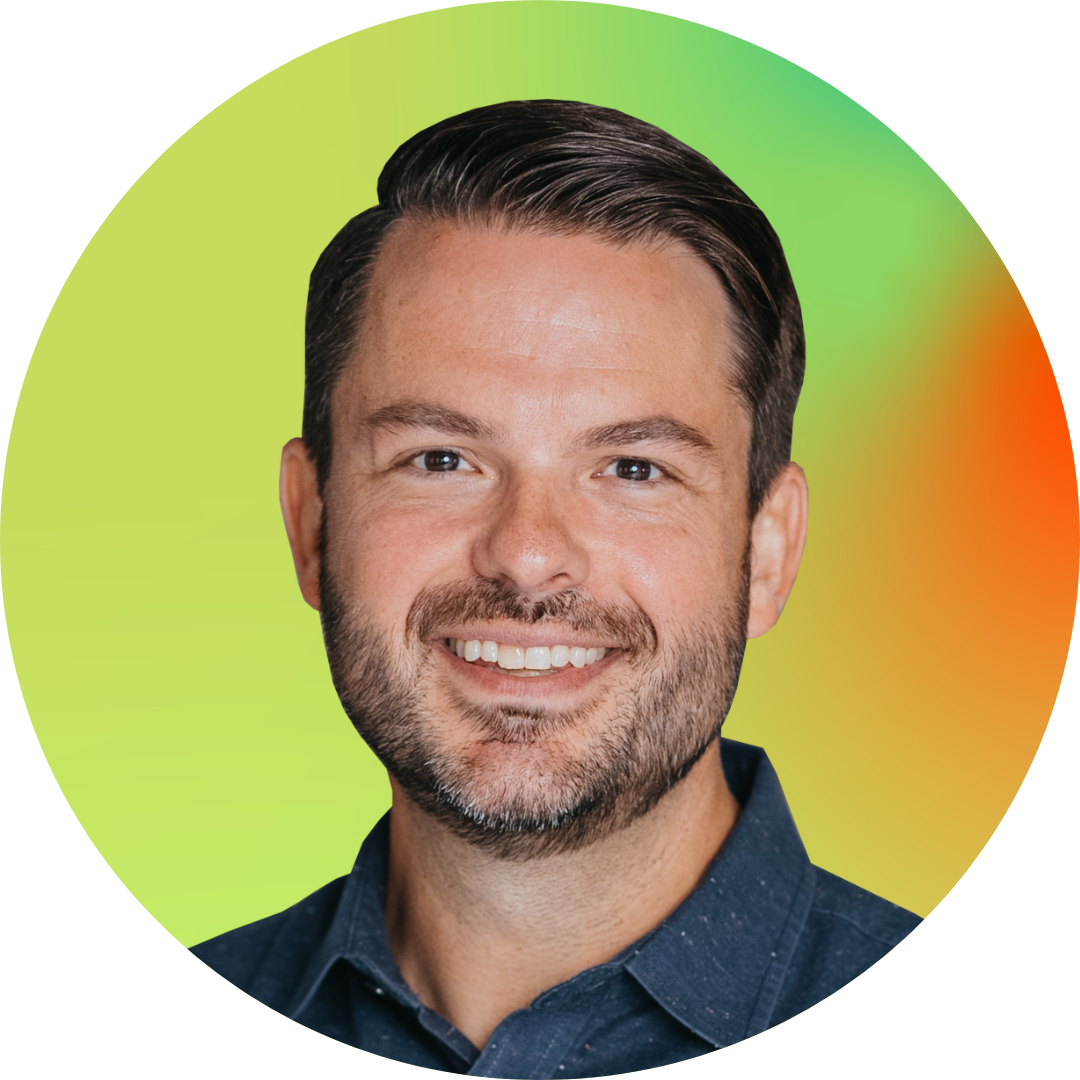
Cory Wheeler
